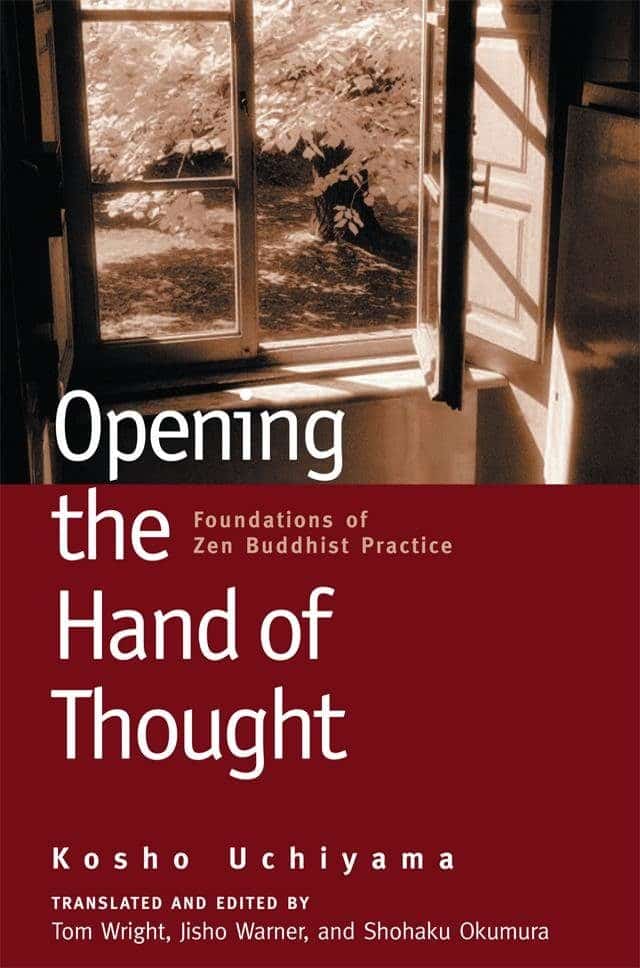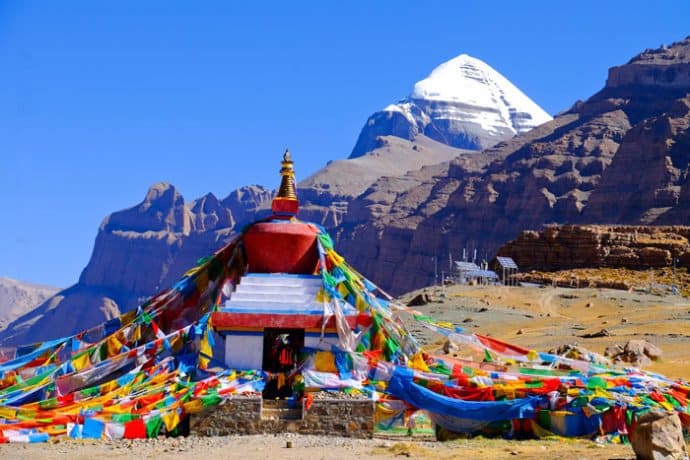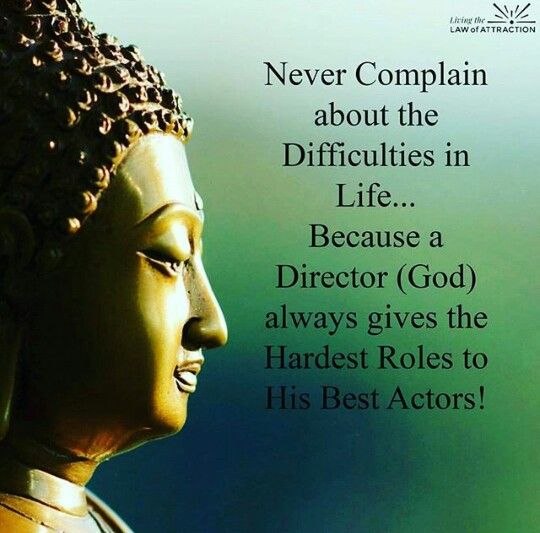*Excerpt from the book Opening the Hand of Thought by Kosho Uchiyama
Satori and Zen seem to have such an intimate relationship in Japan that when somebody says “satori,” everybody immediately associates it with Zen, and vice versa. People, who begin to sit sesshin often wonder, “When we do zazen, don’t we need to have a satori experience?”
In the West, the word “enlightenment” has the same effect. Truly though, satori is inexplicable, and it would be safer not to bring it up at all. I say this because people usually speak of satori in contrast to delusion, and the distinction between satori and delusion is nothing but a comparison that we set up in our ordinary minds. The true satori of Shakyamuni Buddha is not like this. It is said that Shakyamuni made the following statement upon attaining satori: “I attained the way simultaneously with the whole world and all sentient beings. Everything—mountains, rivers, trees, grasses—all attained Buddhahood.” For Shakyamuni, satori wasn’t something peculiar only to himself. His was the satori of life inclusive of himself and all things.
That is something that truly goes beyond the discrimination of our ordinary minds.
In the Heart Sutra (Prajna Paramita Hridaya Sutra) it says, “There is no birth or death, no purity or impurity, no increase or decrease.” Satori is beyond birth and death, beyond increase (gain) and decrease (loss), beyond impurity (delusion) and purity (satori). How can satori be beyond satori? This is a very important point. Satori related to delusion is a limited kind of “satori” based on comparing one thing with another. True satori is not based on such discriminations in our mind, it belongs to the whole of life.
This kind of satori means to be enlightened to the reality of life prior to the distinctions of self and other, or delusion and satori. If we wish to say that we have gained satori as a result of our practice, we should remember well that such satori belongs to the realm of the ego. It is nothing but a satori based on a distinction drawn between yourself and others. It is nothing but a discussion about the world created by the discrimination of our ordinary minds.
In Only Buddha Together with Buddha (Shōbōgenzō: Yuibutsu-yobutsu), Dōgen Zenji writes, “If satori arises from any preconception of satori, that satori will not be reliable. True satori does not rely on concepts of satori, but comes from far beyond conceptualization. Satori is grounded only in satori itself and is assisted only by the power of satori itself. Know that delusion as some fixed thing does not exist. Know that satori is not an entity that exists.”
A student came to see me and asked me this: “When we do zazen in sesshin, there are times when no matter how much we try to stop chasing thoughts and put our energy into the zazen posture, thoughts just keep coming one after another, and we can’t help but chase after them. But at other times, we can do zazen with a completely clear mind without any thoughts coming up. Wouldn’t you call this satori or kenshō?”
I replied, “Certainly when we do sesshins, we often have this experience. But if you call those times we can’t help but chase thoughts delusion, and call clear-minded zazen satori, then delusion and satori are essentially like conditions caused by changes in temperature and humidity.
“We have all kinds of weather throughout the year, and even during a single sesshin the weather may go through changes. If we continue doing sesshins over a long period of time, we naturally see that there is a causal relationship between the temperature and humidity and our own psychological condition.
For the most part, we begin to sense when certain conditions will arise. For example, when it is hot and muggy, no matter how much effort we try to put into sitting zazen, our heads simmer as though they were fermenting; there is nothing we can do about it. But when the air is dry and a cool evening breeze is blowing, our heads clear and it certainly feels as if we have become one with zazen. However, both of these are the conditions of our heads responding to the temperature and humidity. Since doing zazen means to sit and aim at being one with zazen, naturally this kind of zazen is very fine, although this doesn’t mean that such zazen is good, and that zazen that isn’t like this is a failure.
“Regardless of conditions, what is essential in doing zazen is just to sit, aiming at zazen and waking up to zazen. In just sitting and waking up to zazen, the various conditions going on in our heads simply become the scenery of our zazen!
The student went off chuckling at my explanation that satori and delusion are conditions of temperature and humidity. A few days later, the September sesshin began. As the early part of September is hot, the sesshin is only three days long. As usual, the first two days were very muggy and we were doing zazen soaked in sweat. But on the morning of the third day, it cooled off refreshingly and began to feel like fall. We were able to do zazen in comfort and on that note the sesshin ended. At the end of a sesshin everyone relaxes and we have tea together. At this time my student came back to the issue of weather and remarked that he had certainly experienced that satori and delusion are influenced by temperature and humidity.
The world we live in is not something that exists independently of our thoughts and ideas. Our world and these thoughts and ideas appear to us as a unified whole. Depending on what our thoughts and ideas are, our world may appear to us in completely different ways. These thoughts and feelings constitute our psychological condition. Moreover, our psychological condition is at the same time our physiological condition. When something breaks down inside of us physically, our minds no longer remain clear. And if our minds are not clear, then the eyes with which we see the world and our views of life become dark.
Our lives and the whole world take on a gloomy appearance. On the other hand, when we feel healthy our minds brighten, and consequently our outlook on everything becomes brighter. Furthermore, our physiological conditions are tremendously influenced by the environment in which we live.
The changes and conditions of climate and weather both affect us. This cause-and-effect relationship is particularly easy to see when you lead a life as unvaried and devoid of distractions as the sesshins at Antaiji. The essential matter here is the attitude of just striving to wake up regardless of the conditions you are in. It is not about arriving at some state where all thoughts have disappeared. To calmly sit amidst these cause-and-effect relationships without being carried away by them is shikantaza. Like the weather, there are all sorts of conditions in our personal lives: clear days, cloudy days, rainy ones, and stormy ones. These are all waves produced by the power of nature and are not things over which we have control.
No matter how much we fight against these waves, there is no way we can make a cloudy day clear up. Cloudy days are cloudy; clear days are clear. It is only natural that thoughts come and go and that psychological and physiological conditions fluctuate accordingly. All of this is the very reality and manifestation of life. Seeing all of this as the scenery of life, without being pulled apart by it—this is the stability of human life, this is settling down in our life. This is the same as the zazen we do.
We always try to sit zazen aiming at being steadily awake here and now, aiming at the line ZZ′. Yet it’s not a matter of being able to adhere to ZZ′, since we inevitably slide away from it. So we move away from ZZ′ and then we wake up to ZZ′; we move away again and wake up to it again. Zazen is the very posture of forever waking up to ZZ′. As long as we have this attitude, all the thoughts that occur to us when we move away from ZZ′ become the scenery of zazen. The times when we can strictly maintain the line ZZ′ are also the scenery of zazen.
It is not that the cessation of all thought is satori and good, and the arising of thoughts and the tendency to chase after them is delusion and bad. Just sitting, transcending good or evil, satori or delusion, is the zazen that transcends the sage and the ordinary man. In The Record of Linji (Rinzai Roku), Linji Yixuan (Rinzai Gigen, d. 867) says:
The true practitioner of the Way completely transcends all things. Even if heaven and earth were to tumble down, I would have no misgivings. Even if all the buddhas in the ten directions were to appear before me, I would not rejoice. Even if the three hells were to appear before me, I would have no fear.
Why is this so? Because there is nothing to dislike.
For Rinzai, the appearance of all the buddhas in the past, present, and future was not something to rejoice over, nor was the appearance of the three hells something of which to be afraid. Of course, not being afraid of the appearance of some hell doesn’t mean that for Rinzai hell had no existence.
For him, hell was a kind of scenery that was different from the scenery of the buddhas. The point is that whether some hell, all the buddhas, or anything else appeared before him, Rinzai saw all of these as the scenery of his life. For us, this is nothing but the scenery of our zazen. I hope that people who practice zazen will continue regular sesshins and daily zazen for at least ten years. It’s a tremendous thing to be able to give oneself to this kind of practice and not be caught up in distractions.
Our deepest mental suffering will come up during these years of zazen, and we will be able to continue our practice only if we have the stability to see this suffering as the scenery of our life and not be carried away by it. Working through these ten years, we develop a posture of living out the reality of our true self. If we lead this sort of life and sit zazen, at whatever age, there is no doubt that we will come to have a commanding view of who we are. When we live this way, not only zazen, but daily life itself, is such that we cannot find the value of our existence in what other people say or in things that we want. It is a life that is unbearable unless we discover the value of our existence within ourself. What is essential is for us to live out the reality of our true self, whether we are doing one period of zazen, a five-day sesshin, or practicing for ten years or more.




